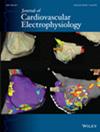Correlation Between CRT Response and Patient-Regret Scores in Patients With Heart Failure With Reduced Ejection Fraction
Abstract
Background
The correlation between CRT response and patient perception of the procedure is uncertain.
Objective
To identify whether patient-reported outcomes correlate with CRT response through a decision regret scale (DRS) in patients with heart failure with reduced ejection fraction (HFrEF).
Methods
We included 150 patients with HFrEF who underwent CRT implantation at the Cleveland Clinic from 2020 to 2022. Each patient was given a DRS questionnaire at 6 months post-CRT implant, and their CRT response status was assessed echocardiographically shortly thereafter. Response was defined as an improvement in LVEF > 5% with a reduction in LVESV > 10%. Patients were unaware of their response status at the time of filling out the questionnaire. The DRS Questionnaire asks patients whether they regret their decision to undergo a procedure. We grouped Questions 1, 3, and 5 from the DRS together for positive questions (higher is more regret), and Questions 2 and 4 were grouped for negative questions (lower is more regret). This data was compared between the two groups based on responder and nonresponder status.
Results
At 6 months post-CRT, the mean LVEF for responders compared to non-responders was 43% versus 27% p < 0.001, respectively. The median IQR positive score was 3 (3–5), and 10 (8–10) for negative questions amongst all patients. There were no patients who voiced significant regret for having undergone device implant. In comparing the mean scores between responders and non-responders there was no difference (median IQR positive score 3 (3–6) in non-responders, 3 (3–4.5) in responders; p = 0.19; negative score 10 (8–10) non-responders, 10 (9–10) in responders; p = 0.44)).
Conclusion
Patients with HFrEF undergoing CRT overwhelmingly do not regret their decision to undergo device implantation. The presence or absence of significant remodeling did not impact patient satisfaction and feelings toward the decision to undergo device implantation.

 求助内容:
求助内容: 应助结果提醒方式:
应助结果提醒方式:


